Predicting employee turnover with AI: The future of recruitment and retention in SA
Retaining top talent has become just as critical as finding it. For South African companies, the question isn’t just why employees leave, but how to stop them from leaving in the first place. Traditional HR methods, while valuable, often fall short when it comes to proactively managing employee turnover. That’s where Artificial Intelligence (AI) steps in. As a recruitment agency in South Africa, we know that predicting employee turnover is crucial to maintaining business stability.
AI is transforming the recruitment and retention landscape by enabling companies to move from reactive strategies to predictive ones. In this blog, we explore how AI is being used to predict employee turnover, the importance of acting on those predictions, and the powerful retention strategies that follow. Whether you’re a business leader, HR professional, or simply curious about the future of work, this guide will show how AI-driven retention analytics can make a measurable difference in your workforce stability—especially within the diverse and dynamic South African employment market.
Understanding AI in employee retention
AI refers to the simulation of human intelligence processes by machines, particularly computer systems. In the context of employee retention, AI utilizes data analysis and machine learning algorithms to detect patterns and predict future behaviors related to employee attrition. This predictive capability enables organizations to address potential issues before they lead to turnover.
The Importance of Predicting Employee Turnover
Predicting employee turnover is crucial for maintaining business stability and reducing unnecessary costs. In South Africa’s competitive talent market, losing an employee means more than just filling a vacancy, it involves high expenses in recruitment, onboarding, and training, along with lost productivity and valuable institutional knowledge.
When experienced staff leave, operations can slow down, teams become overburdened, and morale may drop. These disruptions often lead to a cycle of further resignations if not addressed quickly.
That’s why AI-powered retention analytics is such a game-changer. It helps companies spot early warning signs of disengagement or dissatisfaction—long before an employee decides to leave. With these insights, businesses can intervene early with personalized strategies, such as career development, mentorship, or workload adjustments.
By proactively addressing potential turnover, companies not only retain key talent but also boost performance, continuity, and long-term growth.
How AI predicts employee turnover
Artificial Intelligence doesn’t just react to employee exits, it anticipates them. Using advanced algorithms and data-driven techniques, AI helps businesses spot the subtle signs that an employee might be considering leaving. Here’s how it works in a clear, step-by-step process:
1. Smart data gathering
AI begins by pulling together a wide range of employee-related data, everything from demographics, performance scores and attendance records to engagement survey responses and even feedback from exit interviews. This data forms the foundation for identifying trends and triggers that contribute to turnover.
2. Pattern recognition through machine learning
Once the data is collected, AI uses machine learning to sift through it, identifying patterns that are often too complex or subtle for humans to detect. For example, it might find that employees with a sudden dip in engagement or those working overtime consistently are more likely to resign.
3. Predictive modeling for risk forecasting
Using these patterns, AI creates predictive models that estimate the probability of individual employees leaving. These models are continuously refined with new data, becoming more accurate over time. In other words, the system learns as it goes.
4. Turning insights into action
The final and most critical step is delivering actionable insights to HR teams and managers. Rather than generic advice, AI highlights specific employees who may be at risk and recommends tailored retention strategies. Like offering training, initiating one-on-one support, or reviewing workloads, helping companies intervene before it’s too late.
In essence, AI transforms employee retention from a reactive process into a strategic advantage, especially in the fast-paced and competitive South African employment landscape.
Retention strategies after AI prediction: Turning insights into action
AI is not a replacement for human empathy or leadership, rather, it equips HR professionals and managers with the tools they need to act swiftly and smartly. In South Africa’s diverse and highly mobile workforce, this combination of technology and human understanding can be a game-changer.
Here’s how businesses can effectively respond to AI-driven turnover predictions:
1. Personalized retention plans
AI helps segment employees by risk level, allowing companies to customize interventions based on each individual’s needs. For example:
- High performers who are disengaged may benefit from career advancement opportunities or cross-functional projects.
- Mid-level staff showing signs of burnout might need workload adjustments or flexible scheduling.
- New hires flagged as flight risks may simply require clearer expectations or a more engaging onboarding experience.
Personalization ensures that the solution fits the problem—boosting the chance of retention success.
2. Open communication channels
After AI flags a concern, direct communication is key. Managers should initiate honest, empathetic conversations with at-risk employees to understand their concerns. These check-ins build trust and demonstrate that the organization is invested in their well-being and growth.
South African workplaces, known for their cultural diversity and complex dynamics, particularly benefit from these human-centered interactions, as they help navigate personal and cultural nuances AI cannot fully interpret.
3. Upskilling and career development
A frequent driver of attrition is the lack of growth opportunities. AI might detect this by analyzing performance plateaus, low engagement scores, or static roles. Offering:
- Training and development programs
- Mentorship initiatives
- Clear career pathways
…can reinvigorate employees and encourage them to see a future with the company.
4. Wellness and work-life balance support
If AI finds that excessive overtime or increased absenteeism is a common theme among at-risk employees, this could indicate burnout. Implementing wellness initiatives such as:
- Mental health resources
- Flexible hours or hybrid work options
- Wellness days or team-building activities
…can improve morale and signal that the company values employee well-being.
5. Recognition and reward systems
Low engagement scores can often be traced to a lack of recognition. AI might flag employees who perform well but rarely receive praise or incentives. A revitalized recognition strategy, whether through financial bonuses, shout-outs, or milestone celebrations, can significantly enhance retention.
6. Managerial coaching
Sometimes, the problem isn’t the job, it could be leadership. AI can highlight team trends that point to problematic management styles. Investing in leadership training and coaching for managers helps create a more supportive environment and improves team cohesion, reducing turnover at the source.
The most effective retention strategy combines AI’s predictive power with human insight, empathy, and responsiveness. It’s not enough to know who might leave; you have to know why, and what will make them stay.
Bridging technology and human insight for a stronger workforce
As the South African workforce becomes increasingly agile and competitive, organizations must evolve from reactive talent management to proactive retention planning. Artificial Intelligence offers an invaluable edge, allowing companies to foresee potential turnover, understand its root causes, and respond with precision.
But AI is only part of the equation. True success lies in pairing predictive technology with human-centered strategies, empathy, communication, mentorship and growth opportunities. When businesses use AI not just to gather insights but to enhance their people practices, they create workplaces where employees feel seen, supported, and inspired to stay.
Predicting employee turnover is crucial for maintaining business stability and reducing unnecessary costs. At MASA, we help South African businesses unlock the full power of recruitment and retention. Our expert staffing solutions combine cutting-edge technology with a deep understanding of local workforce dynamics, giving you the tools to retain your top talent and build long-term organizational resilience.
Take the next step toward smarter staff retention. Visit MASA’s homepage to learn how we can support your hiring and retention goals.



